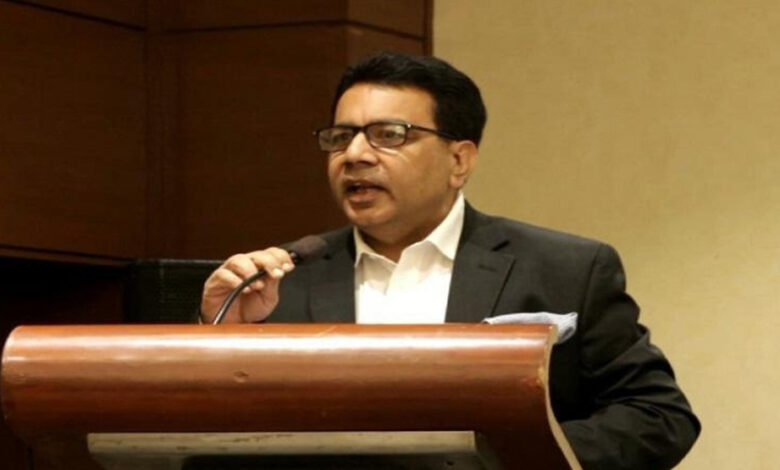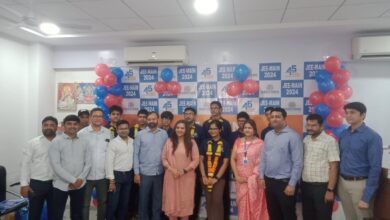Ashoka University Founder Pranav Gupta: “Gender equity in STEM requires female-centered initiatives.”

According to Pranav GuptaAshoka University founder, “improvements must be made in order to reduce the gender gap in male-dominated fields such as STEM. Changing this equation will increase women’s chances of professional achievement.
Science, Technology, Engineering, and Mathematics (STEM) have historically been dominated by men. The use of technology may assist with many problems, but the best solutions are found when multiple points of view are represented. Workplace cultures need to cultivate diversity, inclusion, and engagement by creating an inclusive and accessible workforce. However, gender disparities and lack of diversification in STEM fields limit the use of technology. Pranav Gupta Ashoka University’s Founder highlights, “Improvements must be made in order to reduce the gender gap in male-dominated industries like in case of STEM areas. Our aim should be to change this equation so that women have the same prospects for professional achievement as males in the future.”
It was reported in a Deloitte study that women are making relatively slow progress in the economy, but much slower progress in technology. Although women comprise 32.9% of the workforce, roughly 25% of them work in technology. The All India Council for Technical Education (AICTE), which regulates the Department of Higher Education, reports that women made up 29.7% of all engineering course enrolments in 2017-18 and 28.1% in 2018-19. The 2019–20 academic year saw 29.2% of bachelor’s degree courses in technology and engineering enrolled by women. In the 2020-21 academic year, AICTE-approved institutes enrolled 658,191 undergraduate students, with 30.2% of them female.
It is a problem for the entire industry that fewer female students choose to major in STEM fields in higher education. It is important to increase the number of girls studying technology in order to address the gender imbalance in the field. “It is crucial to focus on innovative ways of assisting graduates in gaining proper experience, assuring that they join the workforce prepared and in an efficient manner. Up-skilling and empowering young female students is vital to develop intellectual capital for the future.
Gender variety produces innovation capabilities, which enhances organizations and in turn the industry overall,” contends Pranav Gupta who is also the Founder of Plaksha University. He continues, “At Plaksha University, we promote inclusiveness of all forms and provide a comprehensive learning environment for students from different sections of the society. Plaksha University’s goal is to better prepare its students for the long term by expanding their educational prospects and sensitize them about practical matters.”
According to Deloitte Global, the average female workforce participation rate for large global technological organizations is close to 33%, with 25% working in technical positions. According to the National Association of Software and Services Companies (NASSCOM), 36% of Indian women work in the technology industry. Women’s employment has increased steadily over the previous few years by roughly 2.5%.
The percentage of women studying STEM at the university level in India is over 43%, which is significantly better in India in contrast to other industrialized countries like the United States (34%), Canada (31%), and the UK (38%). The number of women in India who chose STEM degrees climbed from 10, 02,707 in 2017–18 to 10, 56,095 in 2019–2020, as per the annual All India Survey on Higher Education (AISHE) report.
Ashoka University has collaborated with Sona BLW Precision Forgings Ltd (Sona Comstar) to award scholarships to qualified women scholars pursuing Computer Science or Mathematics as a major or minor. A three-year initiative aims to facilitate the development of female talent in STEM for economically disadvantaged students. “We are advancing the participation of women in STEM education and the workforce through our cooperation with Sona Comstar.
Students will be inspired to enroll in STEM courses as a result of this opportunity. The number of women in India’s technology industry has steadily increased over time, but I still believe gender equality is a long way off. To change the ratio, the industry must give women leadership roles in projects and give them the opportunity to develop their skills. These can boost creativity levels, efficiency, and other benefits by embracing gender diversity,” states Pranav Gupta Ashoka University Founder.
In order to achieve the 2030 Sustainable Development Goals, which emphasize ‘not leaving anyone behind’, radical changes, comprehensive strategies and creative fixes are required. Women are increasingly attending engineering colleges in India, according to a Sheatwork survey. There are currently 16% more female students in IITs than there were four years ago. In order to reduce the gender gap and achieve gender parity, industry-academia initiatives must be focused on women.In order to reduce the gender gap and achieve gender parity, industry-academia initiatives must be focused on women.
The government of India has introduced policies that have made women’s involvement in STEM a remarkable potential for the country. Designed to attract young women into STEM fields, the Department of Scientific and Technology (DST) created the Vigyan Jyoti scheme at the school level in 2020 to hold special lectures, seminars, and science camps to encourage them to pursue further education in STEM fields. Similarly, the Government of India announced scholarships like Pragati by the All India Council for Technical Education, so that girls could study technical subjects.
A number of scholarships and programs are also available, including Tata Housing scholarships for female students from economically weaker sections who wish to pursue professional and technical studies. Sashakt scholarships encourage young women to enter the science and technology fields, while Legrand Empowering Scholarships encourage female students in India to study science or finance.
“In terms of gender parity, given the size of the nation’s population, we have not yet reached the ideal aim. Simply working with an institution is not enough to encourage women to participate more. Given the importance of parents and peers in such decisions, they might be enticed by giving financial assistance, internships and a safe workplace culture.
Women-centered initiatives in STEM are needed to increase gender equity. There have been government and private efforts which have contributed to the growing interest of women in the field. There must be widespread support from all sides to encourage and propel women into technological fields,” concludes Pranav Gupta Ashoka University Founder.


